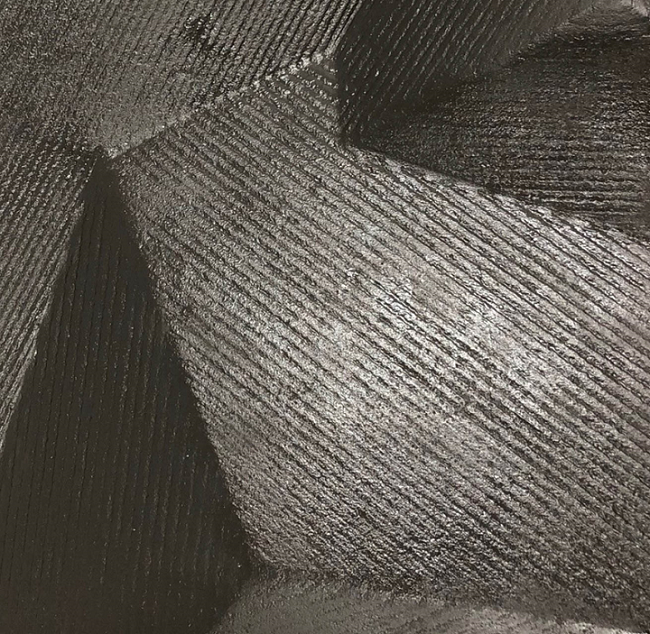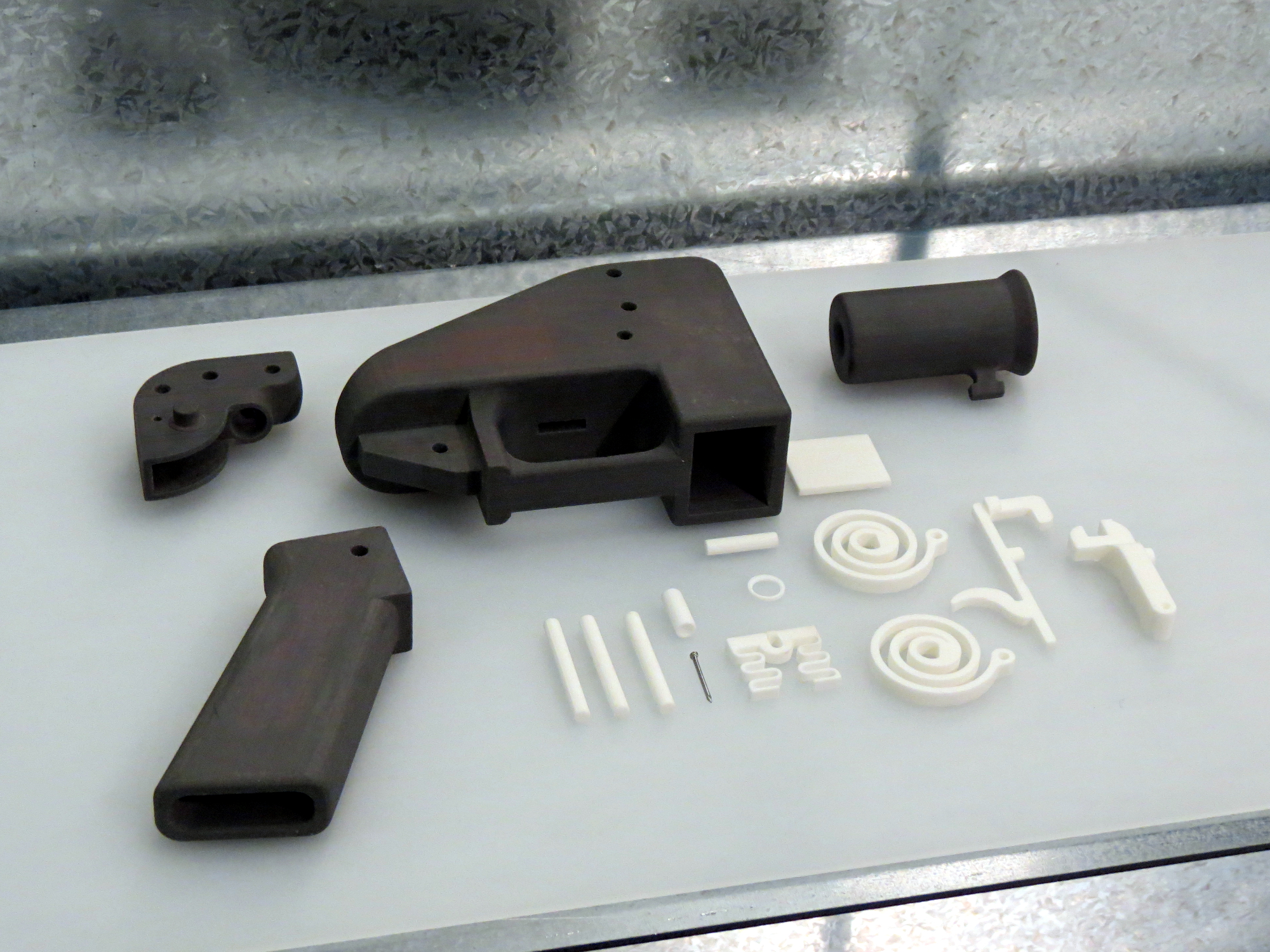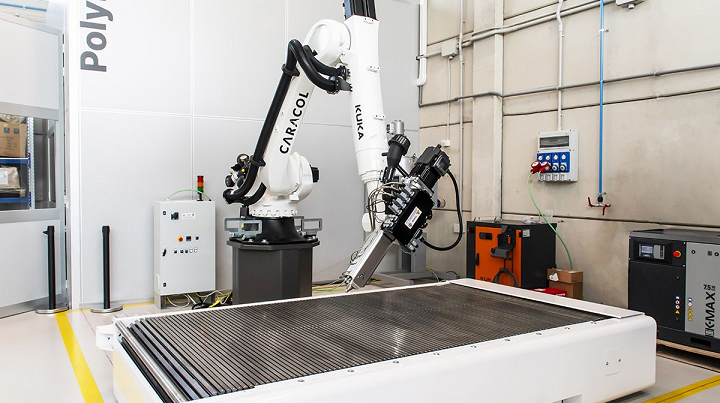In today’s 3D Printing News Briefs, we’re starting with a proof of concept for 3D printing recyclable construction waste materials to make molds. Researchers investigated the relevance of forensic firearm examination techniques for 3D printed guns, and Triastek received FDA clearance for its gastric retention product. Moving on to business and robotic 3D printing, Meltio and One Off Robotics have joined forces, and Caracol held a grand opening for its Production & Research Center in Italy.
Binder Jetting Recyclable Processed Construction Waste for Mold Making
According to Roland Berger, the market for excess material recycling is expected to grow at an annual rate of 7-9% until 2025, and demand for sustainable, value-added solutions is on the rise. Companies can save money by eliminating high disposal costs for construction and wood waste, as well as by reducing resource expenditures. Austrian company Parastruct GmbH uses 3D printing to reintroduce unused mineral materials, like construction waste, and biogenic resources, including sawdust, into its sustainable solution for recyclable mold making. Together with its partner voxeljet AG, it successfully tested out an initial proof of concept: 3D printing recyclable residual materials from the construction industry. They used voxeljet’s binder jetting R&D VX200 printer and Parastruct’s Ecomould material set, which consists of a mineral binder and biogenic production residues from construction.
Parastruct says that its Ecomould has a much lower carbon footprint than conventionally manufactured sand-phenolic resin molds, so it can help companies reach their sustainability goals. By using binder jetting, the fully recyclable material can be used to print molded parts well-suited for cold casting concrete and ceramics for interior design objects, or for laminating processes. voxeljet’s AM solutions are open source, with flexible printing parameters able to adapt to different material sets, which is why they’re ideal for processing Ecomould. At the end of their life, molds made out of Ecomould can also be shredded and reused as particle material for 3D printing, which lowers the carbon footprint even more. Parastruct and voxeljet are now seeking application partners to help advance the transformation of the construction industry in a potential funding project.
Relevancy of Forensic Examination Techniques Applied to 3D Printed Guns
A team of researchers from Duquesne University, with help from the Ross Township Police Department in Pittsburgh, Pennsylvania, wanted to see how feasible the infamous 3D printable one-shot Liberator gun is as a lethal weapon, and to identify characteristics that could be deposited when the weapon was fired. As they explain in their research paper, “The relevance of current forensic firearms examination techniques when applied to 3D printed firearms,” the researchers downloaded unchanged files from the internet for the Liberator, and printed it using PLA and ABS filament. In forensic firearms examination, it’s critical to understand the impact of absent rifling and firing pin impressions, and when you’re dealing with a 3D printed gun, it’s just as important to know if markings caused by printing are relevant to the examination, as well as the feasibility of manufacturing completely 3D printed guns.
“The Liberator was fired remotely into newspapers at the Allegheny County Medical Examiner’s Office. The printing of the Liberator was both inexpensive and relatively quick with only minor hand modifications made after printing. The Liberator fractured beyond repair after firing but successfully fired and penetrated three newspapers. Neither the bullet nor the cartridge case exhibited any individual characteristics that could be used for identification purposes. Suspected thermoplastic deposits were identified on both the bullet and cartridge case, but additional testing must be done for confirmation purposes,” the team wrote in the abstract.
The team found that the Liberator won’t yield any evidence for Firearms and Toolmark Examination.
FDA Grants Clearance to Triastek’s 3D Printed Gastric Retention Product

A PCT application has been submitted for the 3D Microstructure for Gastric Retention delivery technology and its unique Bloom Structure design developed by Triastek. Upon oral administration, the gastric retention prototype expands to a size larger than the diameter of the pylorus, prolonging gastric retention time. During the gastric retention period, the prototype releases APIs according to a predetermined programmed drug release behavior. While simplifying the dosage regimen, reducing the medication burden, and improving the patient’s long-term medication adherence, it can also improve drug absorption and oral bioavailability resulting in improved patient outcomes.
Triastek, a Chinese company that develops 3D printed pharmaceuticals, announced that it’s received clearance from the U.S. Food and Drug Administration (FDA) for the Investigational New Drug (IND) of its 3D printed T22 gastric retention product. This is a 505(b)(2) product for treating pulmonary arterial hypertension (PAH) and chronic thromboembolic pulmonary hypertension (CTEPH), produced with the company’s proprietary Melt Extrusion Deposition (MED) platform plus Micro-Injection Molding (MED&MIM) process. Using Triastek’s 3D Microstructure for Gastric Retention (3DμS-GR) delivery technology platform, T22 reduces the dosing frequency from three times a day to one, and is the first 3D printed gastric retention product to receive IND clearance from the FDA. But, it’s the fourth of the company’s 3D printed drug products to reach the clinical development stage, which ranks Triastek at the top of the global field for 3D printed pharmaceuticals. To fast-track product development, Triastek is preparing to initiate clinical studies with T22.
“Based on our proprietary 3D Microstructure for Gastric Retention delivery technology platform, the two products we developed, T20G and T22, have received IND clearance to proceed from regulatory agencies in China and the United States this year, marking the successful first step for Triastek’s this innovative delivery technology platform proceeding through regulatory review process,” said Dr. Senping Cheng, Founder and CEO of Triastek.
“In 2021, Triastek and Sperogenix Therapeutics reached a co-development agreement regarding development and commercialization of T22 in East Asia to demonstrate the clinical application value of the 3D Microstructure Gastric Retention delivery technology. Based on the progress of T22, companies from several countries and regions have expressed interest in potential collaborations for product development utilizing this drug delivery technology platform.”
Meltio & One Off Robotics Develop Robotic Metal AM Workcell
Wire-laser metal deposition company Meltio partnered with robotic additive manufacturing leader One Off Robotics for reliable, cost-effective metal parts production, and the result is the One Off Robotics Cell, powered by Meltio and made in the USA. The turnkey robotic metal AM workcell—an evolution of Meltio’s standard Engine Robot Integration—uses standard welding wire to produce parts that are consistent and spatter-free for industries including aerospace, automotive, oil and gas, and mining. The eight-axis system, with a deposition rate of up to 1 kg an hour, creates clean, fully dense parts, and enables users to easily adjust settings. It’s configured to work with the Meltio Space robotic slicer, along with other robotic additive software, and can be quickly deployed into a factory environment. The robot and positioner are on a self-supporting platform inside a custom, laser-safe enclosure, and the package includes the W-LMD system, robot, Meltio machine vision laser alignment tool, welding camera, and more
“Meltio’s main commitment with this new product offering with the One Off Robotics Cell powered by Meltio, Made in the USA is to offer all types of industries the ability to manage the entire manufacturing process using our metal 3D printing technology consisting of a Meltio head integrated into a robotic arm and a safe environment, to just produce parts,” said Meltio Engine Product Manager Alejandro Nieto. “This new hardware system allows the customer to receive a ready-to-use cell for robotic metal 3D printing, removing the integration process and long assembly lead times.”
Caracol Opens Production & Research Center in Italy
Just this summer, Italian-US large format additive manufacturing (LFAM) startup Caracol, which produces the Heron robotic arm pellet extrusion platform, opened its North American headquarters in Austin, Texas. Recently, the company welcomed European partners, clients, investors, and media to the official opening of its Italy-based Production & Research Center. The facility is home to multiple labs, dedicated to everything from software and hardware to materials testing and qualification, and works with both polymers and metals. At the celebration of this exciting milestone, guests enjoyed a tour of the center, as well as presentations, demonstrations, a little event swag, food and drinks and networking, and even a little live music as well!
“We opened this center dedicated to 𝗖𝗮𝗿𝗮𝗰𝗼𝗹’𝘀 𝗥𝗲𝘀𝗲𝗮𝗿𝗰𝗵 & 𝗗𝗲𝘃𝗲𝗹𝗼𝗽𝗺𝗲𝗻𝘁 department and its diverse teams,” the company wrote in a LinkedIn post. “This is where the 𝘁𝗿𝘂𝗲 𝗶𝗻𝘁𝗲𝗴𝗿𝗮𝘁𝗶𝗼𝗻 behind our technology happens – 𝗵𝗮𝗿𝗱𝘄𝗮𝗿𝗲, 𝘀𝗼𝗳𝘁𝘄𝗮𝗿𝗲, and 𝗽𝗿𝗼𝗰𝗲𝘀𝘀 meet, to advance the possibilities of #largeformat #3Dprinting.”
Subscribe to Our Email Newsletter
Stay up-to-date on all the latest news from the 3D printing industry and receive information and offers from third party vendors.
Print Services
Upload your 3D Models and get them printed quickly and efficiently.
You May Also Like
Johns Hopkins University Researchers Develop HyFAM Technology
Two scientists from Johns Hopkins University, Nathan C. Brown and Jochen Mueller, have developed a hybrid manufacturing technology they call HyFam, or Hybrid Formative Additive Manufacturing. Their work on this technology...
3D Printing G-Code Gets an Upgrade: T-Code
Good old G-Code still manages many 3D printers, great and small. Just like the STL, it’s a standard that enables collaboration while also holding the additive manufacturing (AM) industry back....
AM Rewind: The Biggest News and Trends of 2024
After a sluggish 2023, driven by persistent inflation and geopolitical tensions, 2024 has seen some recovery. Economic growth climbed from about 2.8 percent in 2023 to a modest 3.2 percent...
Metal Wire 3D Printer OEM ValCUN Announces Plans for 2025 Expansion
ValCUN, a Belgian original equipment manufacturer (OEM) of wire-based metal additive manufacturing (AM) hardware, has announced that the company has entered the next phase of its growth trajectory, making key...





































